Photographing a total solar eclipse is a special experience. On April 8, 2024, my friend Kevin and I set out to capture the eclipse from Perryville Regional Airport in Missouri. This was my second time seeing a total solar eclipse, and it was even better than I expected.
Previously I had been in North Carolina and only saw a sliver of the sky from the woods. For this experience since it was at an airfield in a flat area I could see 360 degrees of sunset when the total eclipse started. The sky turned dark, the temperature dropped, and for a few brief moments, time seemed to stop.
In this post, I’ll share our journey, give important photography tips/gear, and capture the magic of this incredible event.
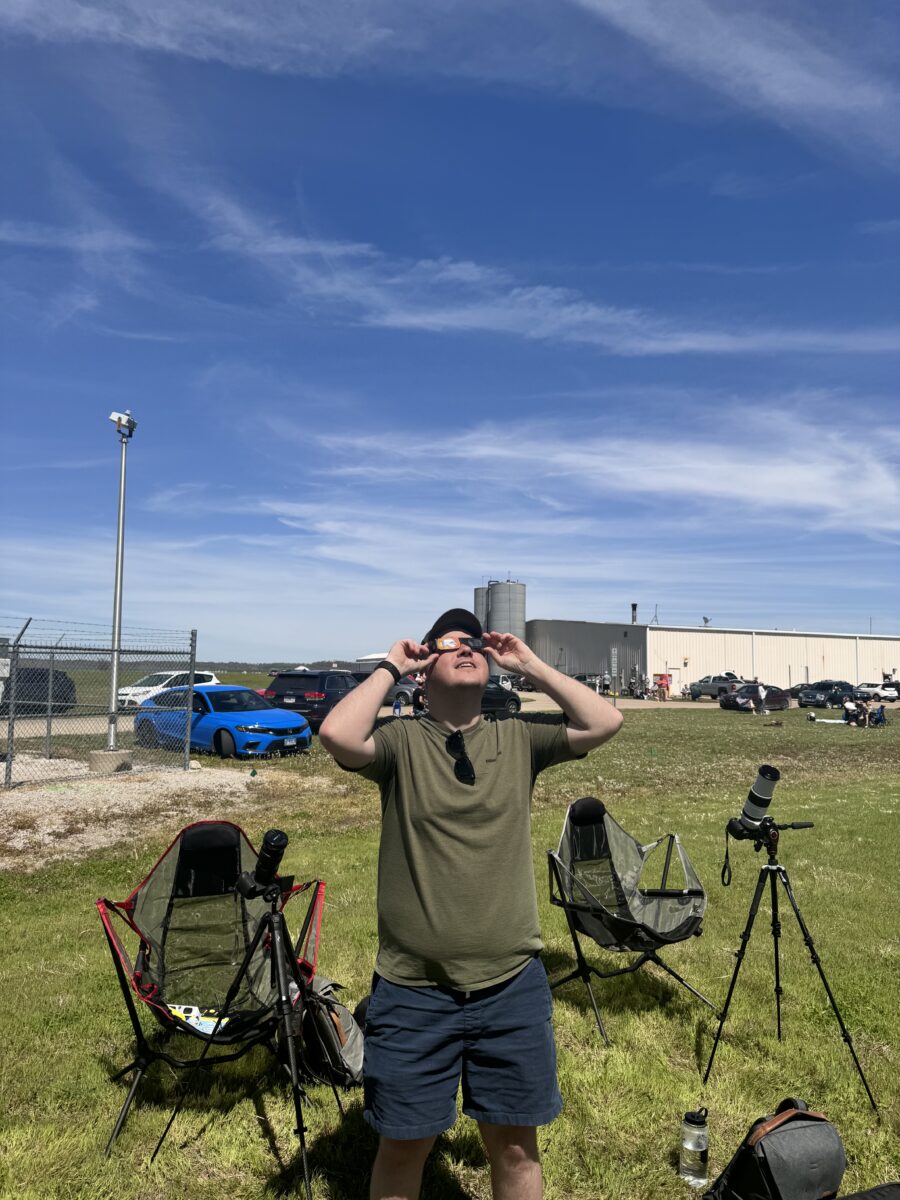
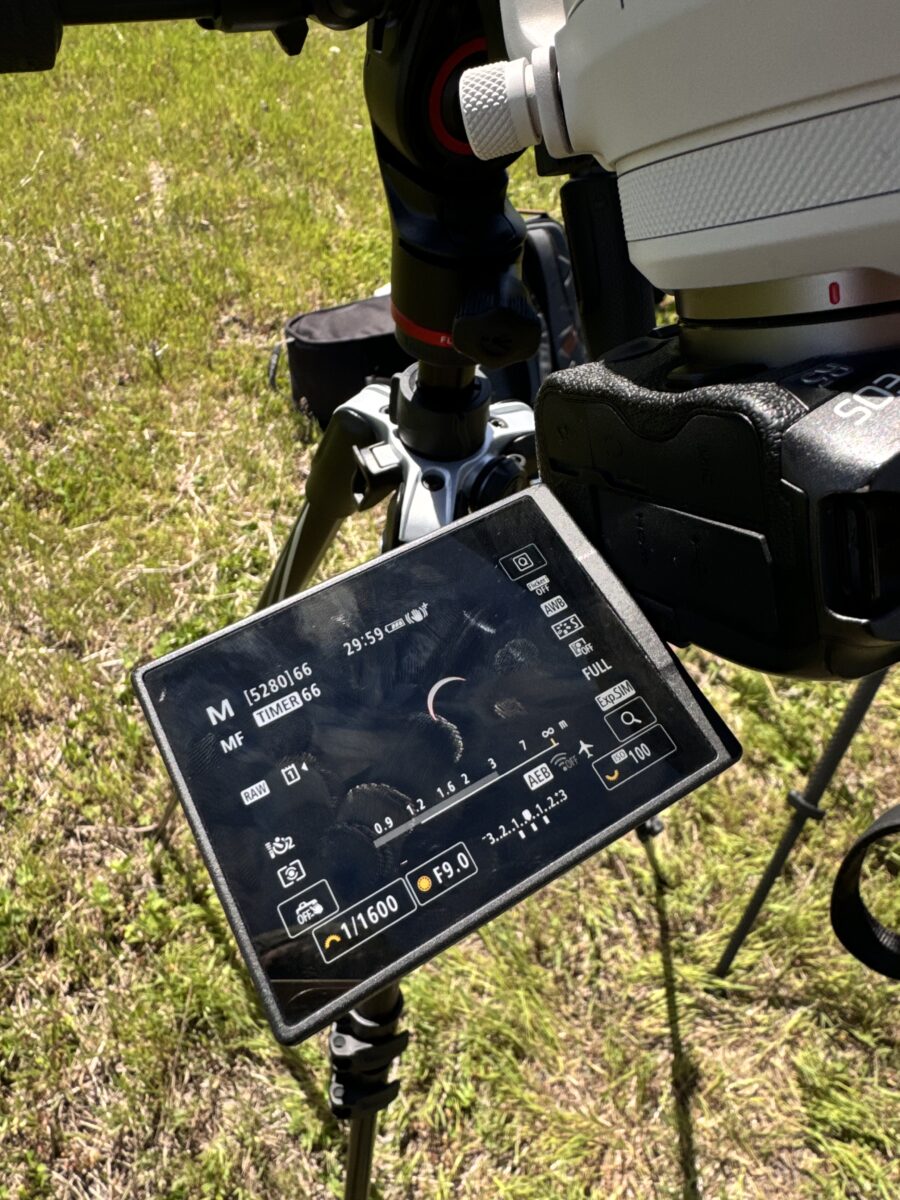
For this eclipse I was equip with eclipse glasses from B&H Photo. If you are planning to see an eclipse make sure to get ISO 12312-2 Compliant glasses from a trusted merchant. During this eclipse I noticed many sellers later recalled their product, staring at the sun can of course damage your vision.
Eclipse glasses are essential to viewing the eclipse, before and after totality. During totality you can remove them and enjoy the view with your naked eyes.
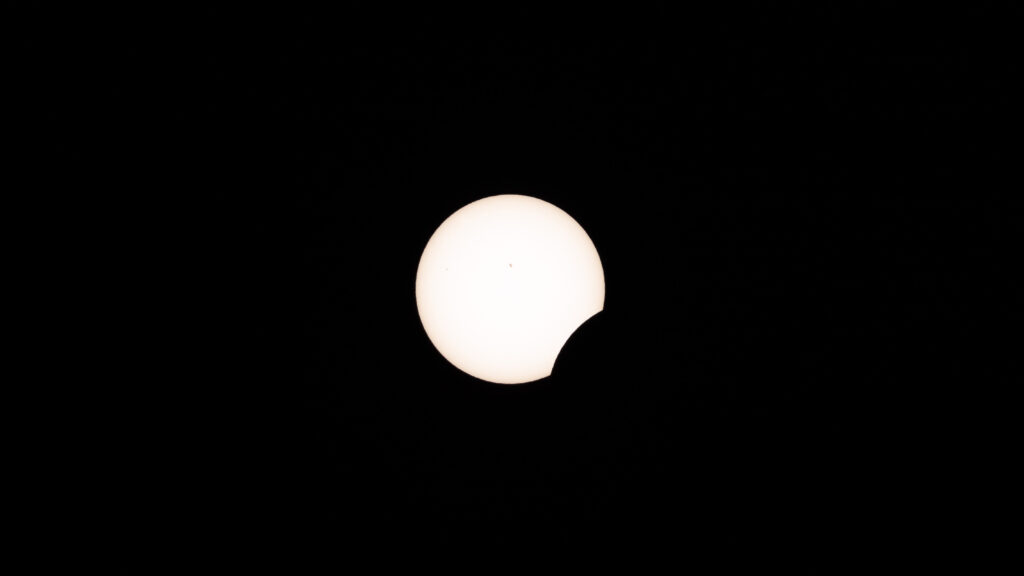
It is quite amazing to see the moon obscure the sun, even when the eclipse is just starting.
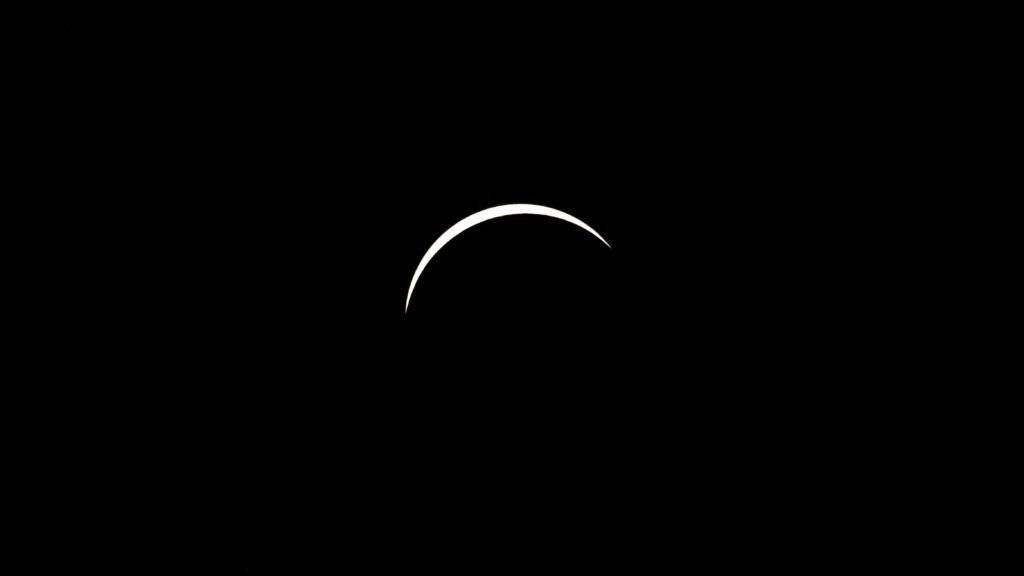
After about an hour from the start of the eclipse we got to experience totality. This is when planning because essential since there you view the eclipse will affect how much time you have and if you are even able to see totality.
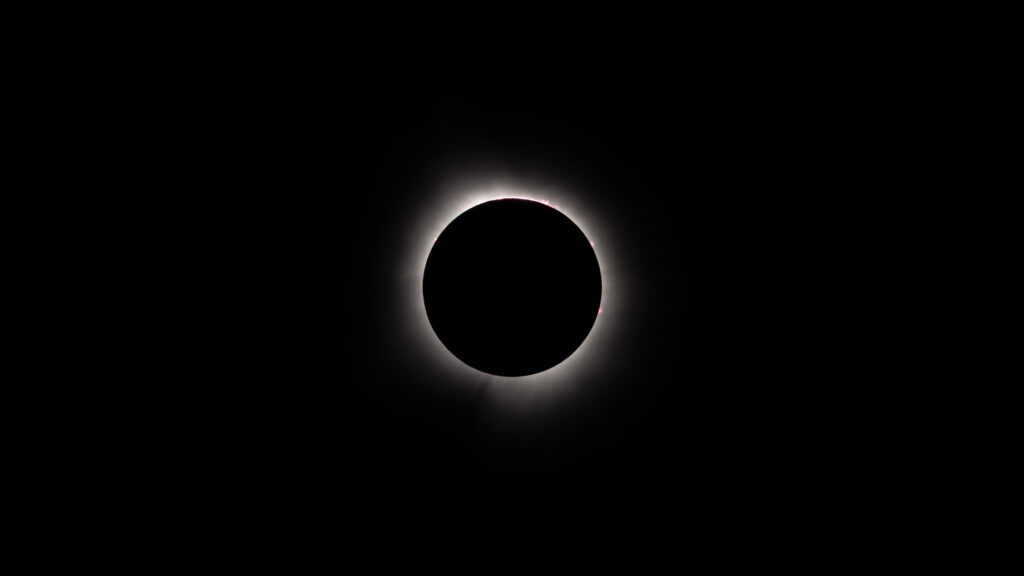
It is such an incredible feeling, you can just feel the energy in the air around you. During totality you can take off your eclipse glasses and view the moon covering the sun with your naked eye. I loved the 360 degree sunset surrounding us as I could hear insects and see street lights turning on. It’s quite the challenge to juggle cameras and experiencing it for yourself in the brief 4 minutes of totality.
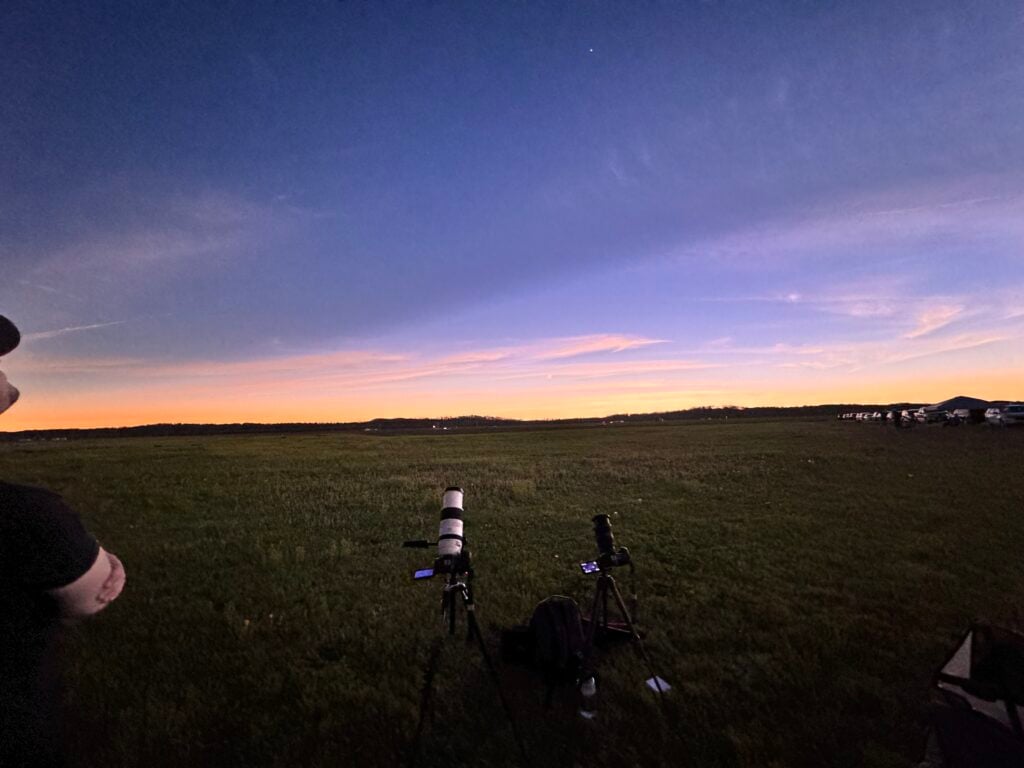
Gear for Eclipse Photography
- Camera (preferably high resolution to capture as much detail as possible.)
- Lens (preferably around 200-300mm), extreme telephoto lenses are great for capture close up details of the sun but your frame will be plenty full at 300mm.
- Tripod (not required but makes the process a lot easier, especially when heavily zoomed in.)
- Solar Filter for your Lens, sustained sun to your camera sensor can damage your sensor. This is where a solar filter is essential. Keep in mind you’ll take this off during totality.
Photos of the 2024 Eclipse
Here’s a collection of my photos from the 2024 eclipse. I shot most of these with my Canon EOS R5 and the Canon RF 100-500mm lens. The clarity and detail are breathtaking. The high resolution of the EOS R5 captured the subtleties of the eclipse perfectly. This setup allowed me to zoom in close and get those remarkable shots of the sun’s corona and the moon’s shadow.
You can even see on the close up photos of the sun Baily’s beads coming off the sides.
My only mistake while photographing the eclipse was zooming out half way though. Since I was juggling so much with this experience I didn’t notice I lost focus (since I had manually focused the shot). Next time I photograph an eclipse I plan on keeping my focal point the same so I don’t have to worry about this aspect.
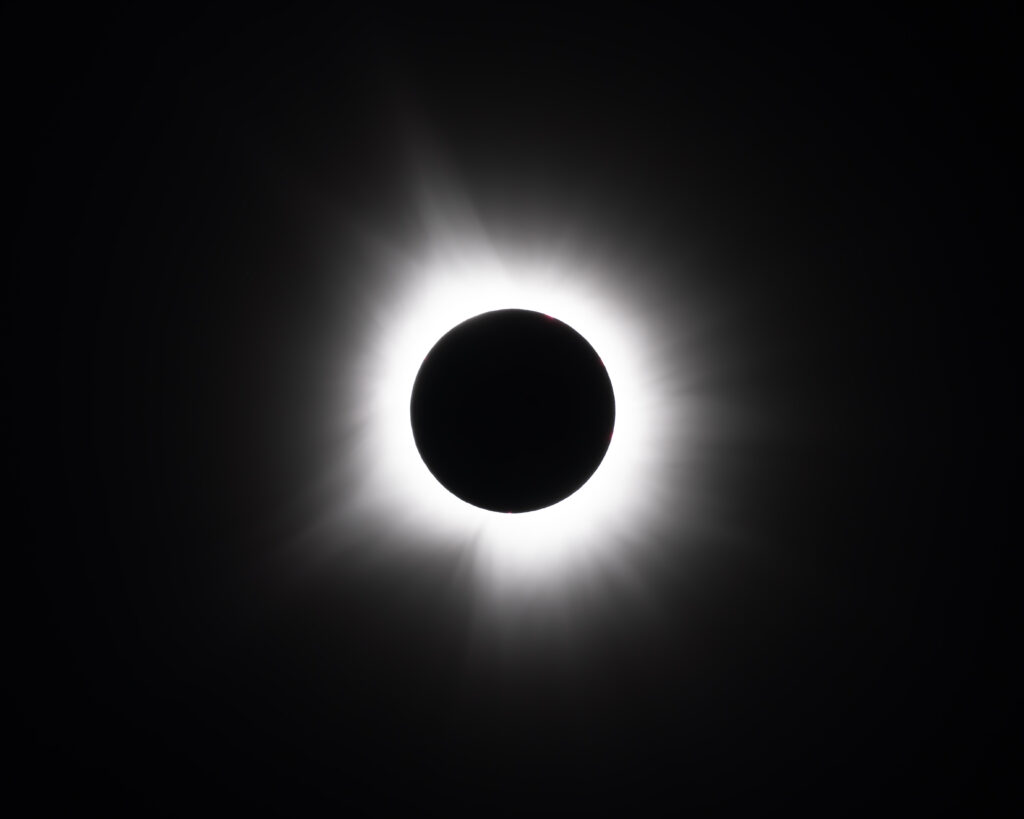
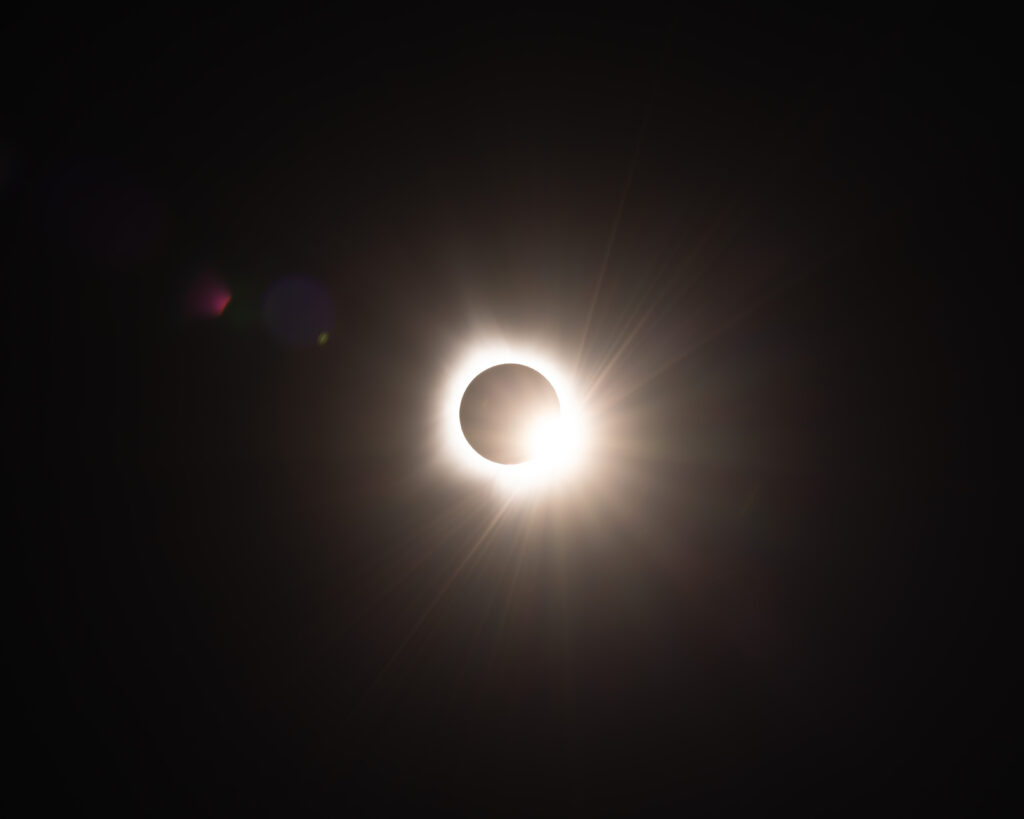
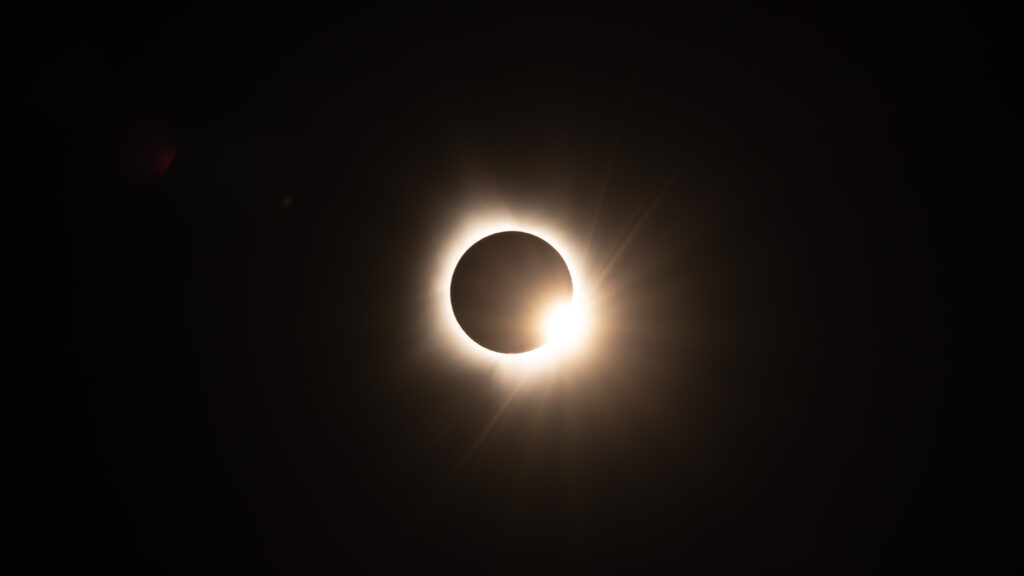


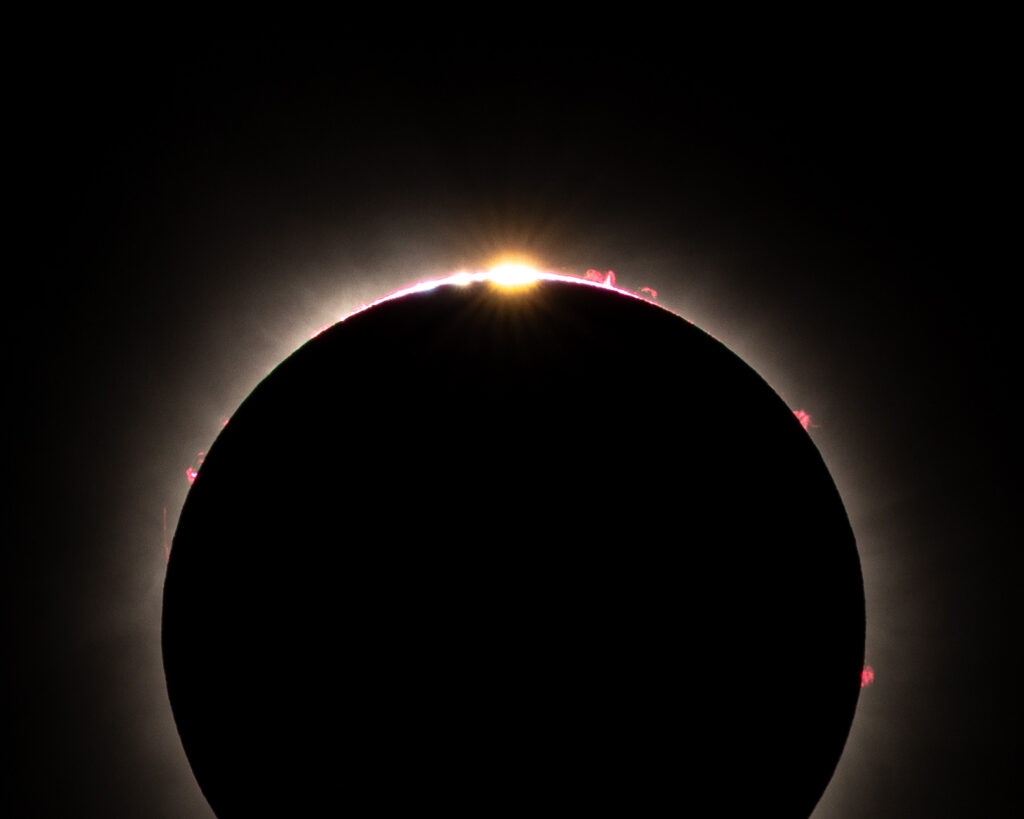
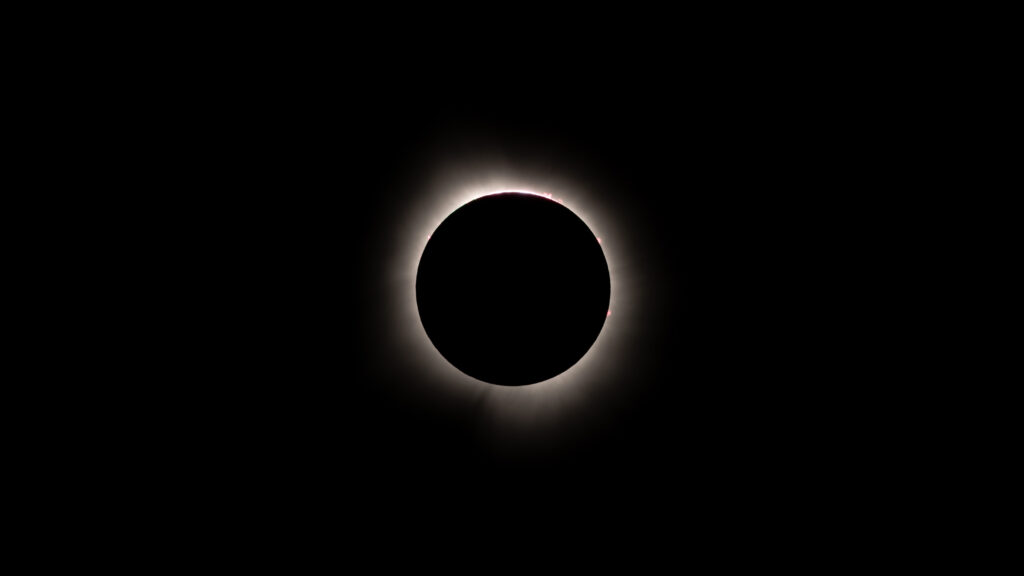


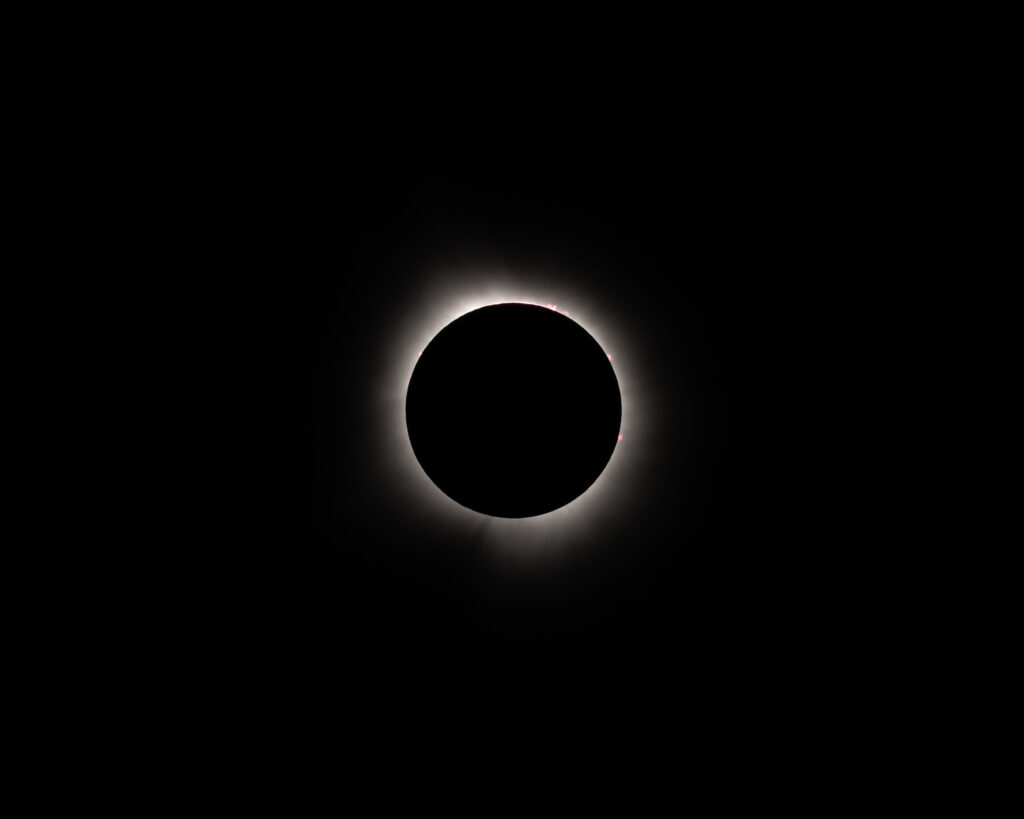



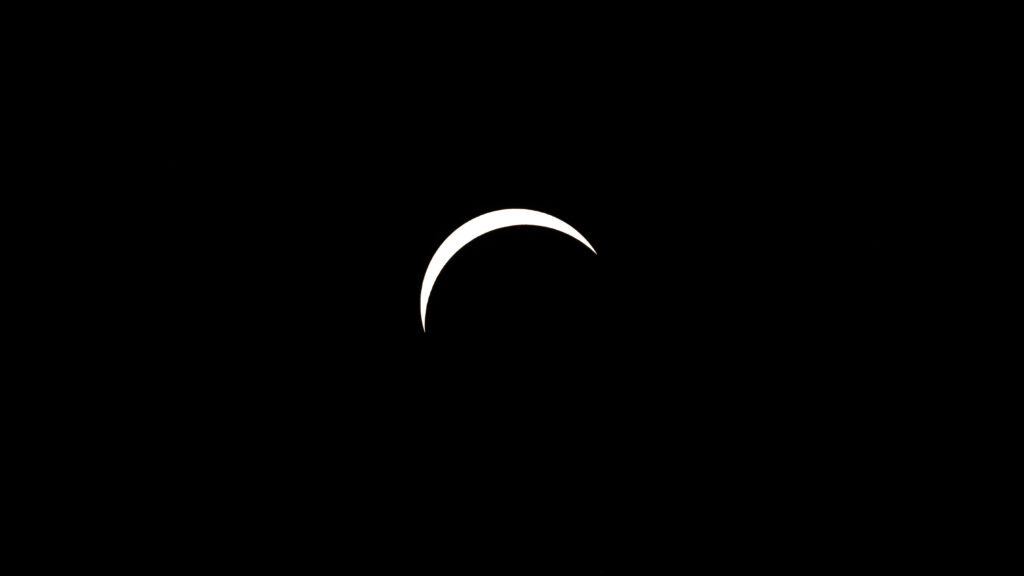
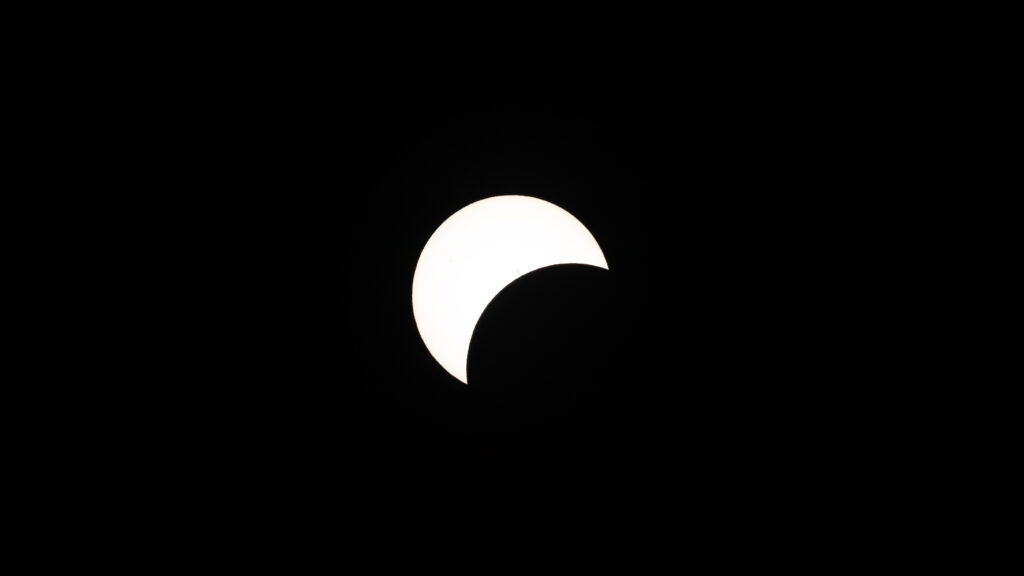
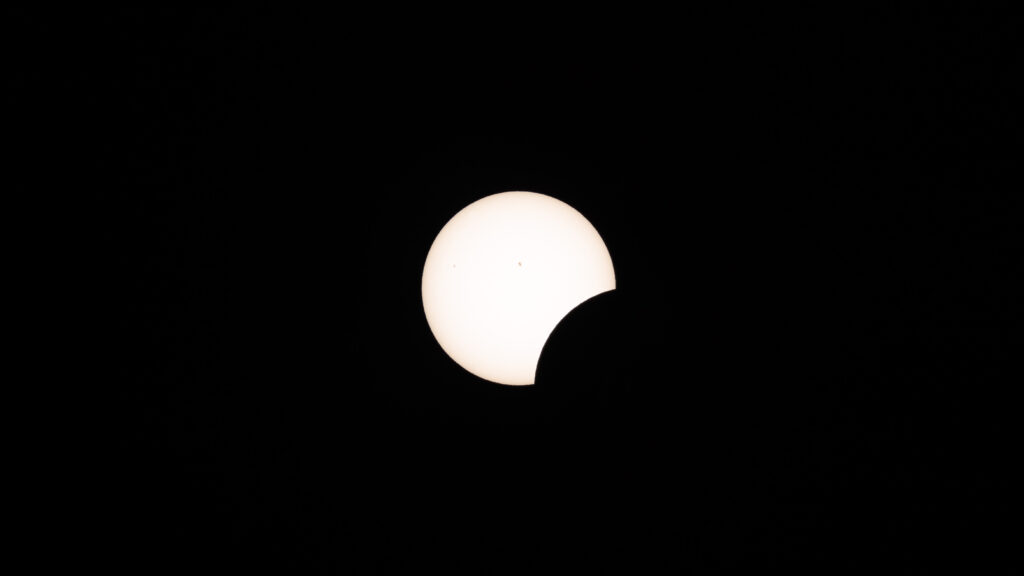
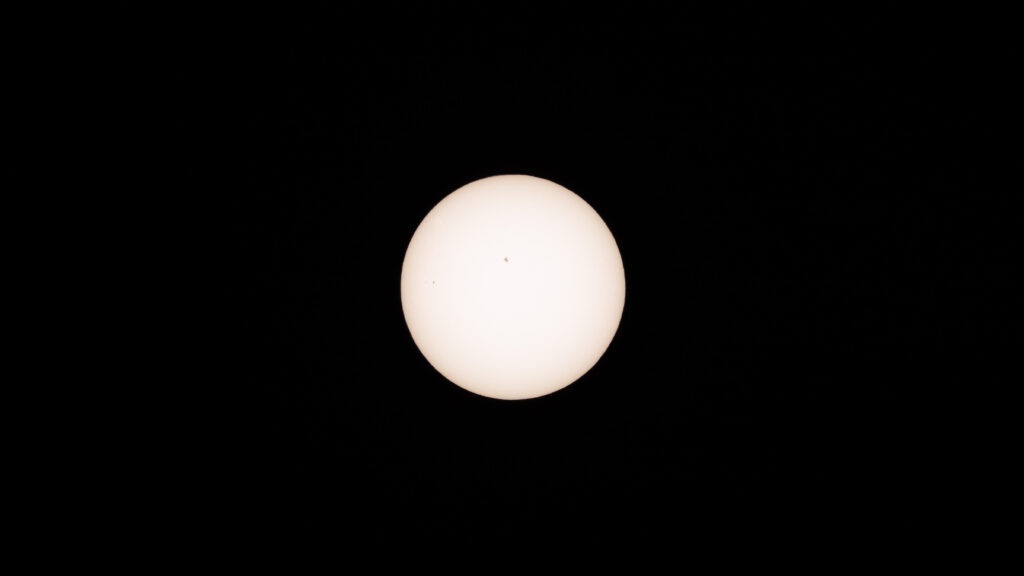
Conclusion
Photographing the eclipse was an unforgettable experience that Kevin and I will cherish forever. From the eerie darkness that blanketed the sky to the rush of excitement as the eclipse unfolded, every moment was extraordinary.
If you ever get the chance to witness a total eclipse, do it! With the right preparation and a bit of patience, you can capture stunning photos and create memories that will last a lifetime.
Remember, the key to great eclipse photography is preparation. Check your gear ahead of time, plan your location carefully, and familiarize yourself with the eclipse timeline. Most importantly, enjoy the experience—sometimes the best memories are the ones we capture with minds, not just cameras.
I hope my journey inspires you to embark on your own eclipse adventure. Whether you’re an experienced photographer or a curious onlooker, there’s something truly magical about witnessing this celestial phenomenon.

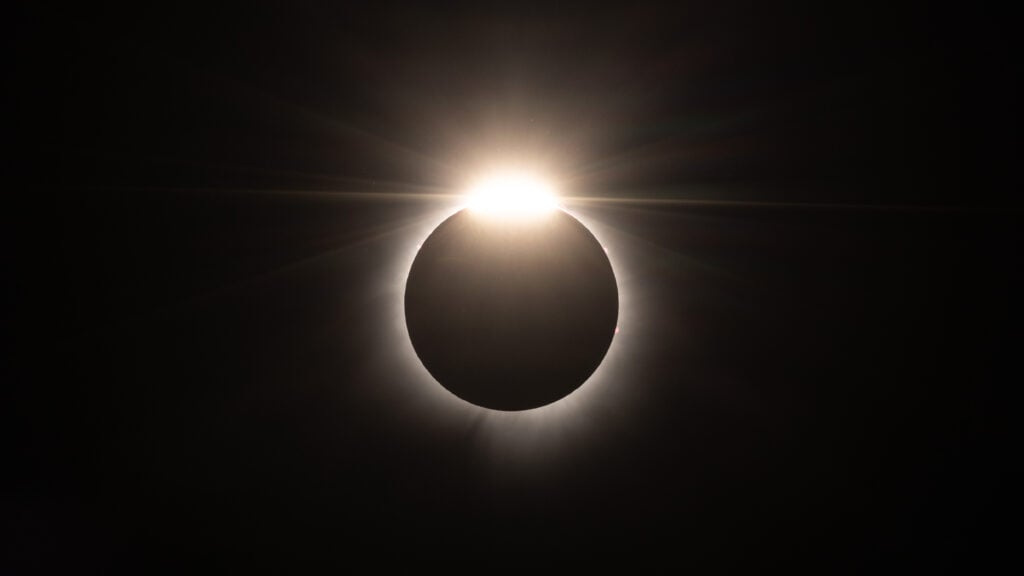
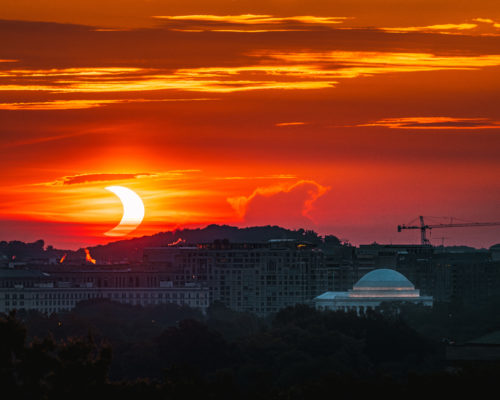

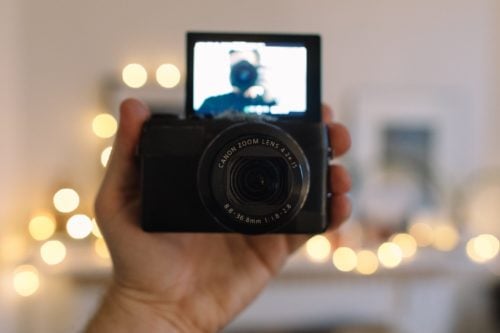
oh you blog sometimes?
I try 😂